Why R&D Matters to International Paper
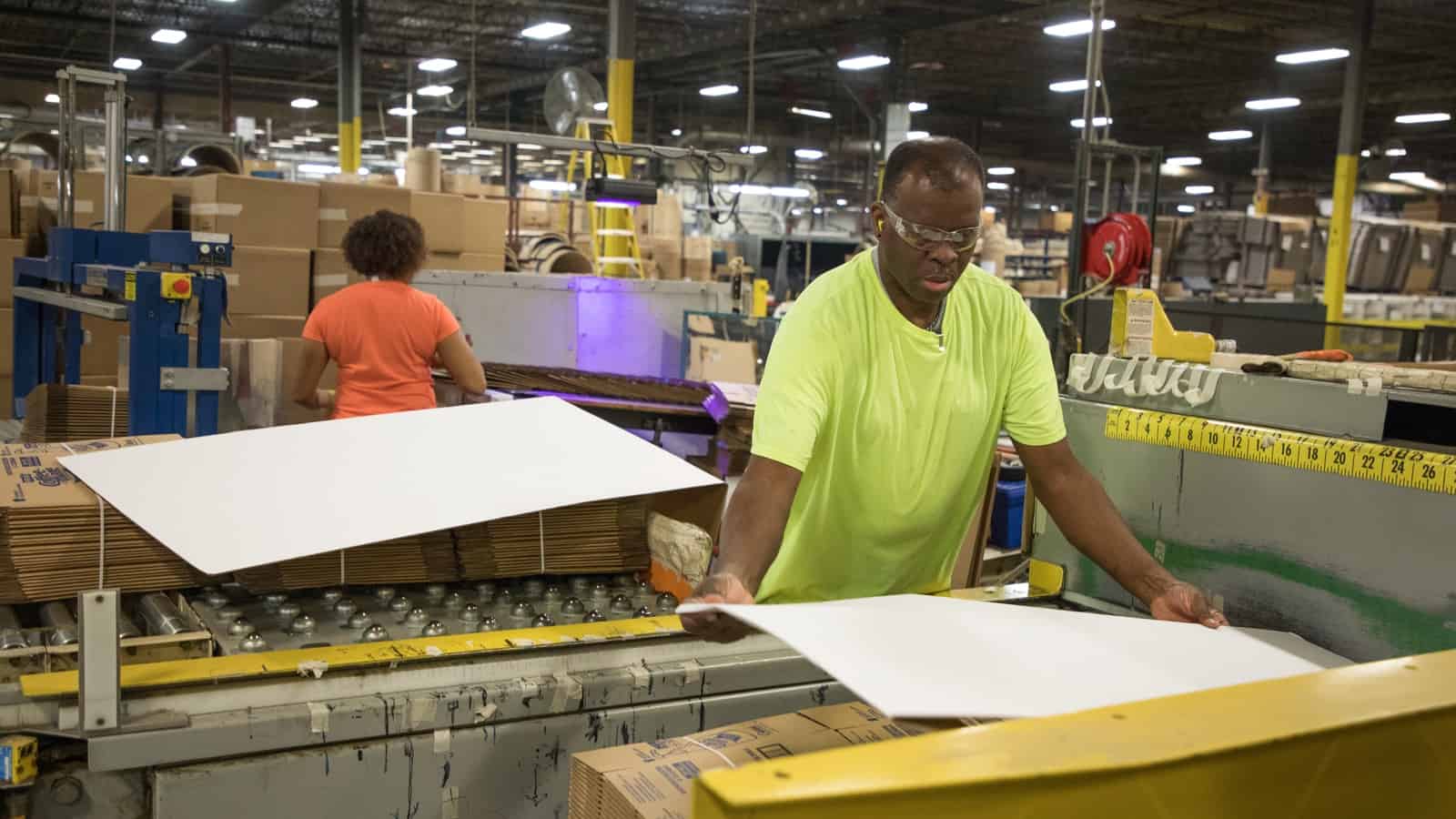
Innovation is getting more expensive—and that should worry all of us.
Until recently, businesses could deduct 100% of their R&D expenses in the same year they incurred those costs. But a tax law that took effect at the beginning of 2022 requires businesses to spread their deductions out over five years instead, driving up the cost of the innovations that keep our economy strong.
At International Paper—an American supplier of renewable fiber-based recyclable packaging and pulp products—that change is causing serious challenges. We spoke to Vice President of Finance and Corporate Controller Holly Goughnour and Senior Director for Government Affairs Kaitlin Sighinolfi to learn more.
Why it matters: “Our company invests in R&D for two main reasons: making better products for our customers and creating safer, more efficient and sustainable manufacturing processes,” said Goughnour.
- “We spend a lot of time and money working to make a better performing, more sustainable and more durable product, but innovation is about more than the product—it’s also about improving the safety and efficiency, and reducing the environmental impact, of our operations.”
The scale: International Paper devotes a significant portion of its resources to innovation, and as a result, the change in tax law has an outsized impact.
- “Much of our free cash flow goes to R&D activities,” said Goughnour. “The change in tax law has resulted in a significant amount of additional cash taxes in this first year, reducing the amount of capital available to invest back into our business, including additional R&D.”
The competition: Goughnour and Sighinolfi also emphasized the need for a tax system that helps manufacturers in the U.S. to compete with companies abroad. According to Goughnour, the new tax change does the opposite.
- “The new tax law enables European and Chinese competitors to accelerate their R&D faster than us,” said Goughnour. “We’re in a global marketplace, and the new tax law puts U.S. manufacturers at a competitive disadvantage.”
- “Almost nobody else in the world has this policy,” said Goughnour. “R&D is an absolute growth engine for the U.S. economy. Why would we have a tax policy that discourages investment in R&D? It makes no sense.”
The last word: “Ours is a supply chain story,” said Sighinolfi. “Innovation should be part of the overall manufacturing value chain, but the new law reduces the value of innovation, slowing investment in innovation and ultimately hurts American businesses, employees and consumers.”
How Will AI Impact the Manufacturing Workforce?

AI is changing the way manufacturers do business—from the production line to the back office and across the supply chain. At the Manufacturing Leadership Council’s Manufacturing in 2030 Project: Let’s Talk about AI event last month in Nashville, Tennessee, panelists discussed how those sweeping changes would alter, and enhance, the manufacturing workforce.
A collaboration between the MLC (the NAM’s digital transformation arm) and the MI (the NAM’s 501(c)3 workforce development and education partner), the event provided key insights for manufacturers into how technology and workforce trends interact with each other. Here are a few key takeaways.
Net positive: “The history of technology adoption is about improving the job quality of individuals on the shop floor. AI helps them to do the job better, provide them with better tools, gives them greater authority and ultimately increases the value-add of their jobs. All of that is a net positive for those individuals,” said MI Vice President of Workforce Solutions Gardner Carrick.
- By leveraging data and enabling greater efficiency, AI will improve communication, increase collaboration across disciplines and stimulate innovation, according to the panel.
- In addition, “AI can even inform the workforce’s creativity by working with it to design a new product or system,” said Jacey Heuer, lead, data science and advanced analytics, Pella Corporation.
Skills needed: While you might expect that implementing AI requires workers skilled in programming, data science and machine learning, manufacturers will also need to expand their bench of critical thinkers and problem-solvers. The panelists had a few tips to help companies along.
- Invest in upskilling programs to make the AI integration process at your company smoother and develop the talent you already have.
- Update job descriptions to reflect the skill sets the company will need in the next five to seven years.
- Consider recruiting for and teaching adaptive skills—skills that enable individuals to adapt easily to changing demands and environments—which can increase the flexibility of your workforce.
- Build partnerships with local schools, community colleges and technical and vocational schools to develop talent pipelines that will meet your needs.
The human-AI collaboration: While AI will take over monotonous, repetitive tasks, the panelists predicted that the industry will continue to center around human labor.
- “You can teach AI to do X. You can teach AI to do Y. [However,] combining the two may be really difficult for AI, while a human can do it better. You’re going to continue to see humans in roles that center on making decisions and telling stories,” said Asi Klein, managing director, industrial products and organization transformation, Deloitte Consulting.
- Meanwhile, AI adoption will likely lead to an increase in available jobs, as more skilled workers will be needed to guide and inform these new processes.
The last word: “Over the last 12 years, we’ve seen a lot of technology adoption, but we have not seen a lot of job loss. In fact, we’ve seen job gains,” said Carrick. “There is a lot of opportunity to reimagine jobs to add value that AI will help to illuminate.”
How Digital Manufacturing Creates Business Opportunities

It’s time to think way outside the proverbial box, according to the Manufacturing Leadership Council, the NAM’s digital transformation arm. In fact, as we get closer to 2030, manufacturers are creating entirely new boxes—including new digital business models, products and services, revenue streams, ways to serve customers and opportunities to increase competitiveness.
Collaborative innovation: By 2030, metaverse technologies will provide rich virtual environments for the collaborative development of new ideas. These shared virtual spaces will enable contributors from multiple remote locations to collaborate in real time.
- These collaborations may include manufacturers, partners, academic institutions and research institutes.
- New concepts can be tested in a virtual world before moving to physical prototyping or production.
Outcome-based products and services: As digital platforms mature and products become increasingly smart and connected, the decade ahead may see a boom in more outcome-based services. This is where the customer doesn’t buy a physical product, but instead signs up to pay for the guaranteed outcomes that product or system delivers.
- This shift will require manufacturers to establish new infrastructure rich in predictive analytics, remote communications and consumption monitoring.
- It also requires a mindset change for traditional manufacturing, from a focus on units and costs to product lifecycles, performance levels and usage.
Blockchain networks: By 2030, blockchain could be leveraged for most world trade, helping to provide the secure traceability and provenance needed to prevent physical product counterfeiting, grey markets in medicines and even the adulteration of the global food supply chain.
- A blockchain is an electronically distributed ledger accessible to multiple users. Blockchains record, process and verify every transaction, making them safe, trusted, permanent and transparent.
- Blockchain technologies promise to be a viable solution to manufacturers’ need to automate, secure and accelerate the processing of key transactions across industrial ecosystems.
E-manufacturing marketplaces: Digitally empowered production-line adaptability, such as the kind that emerged during the pandemic, will provide a foundation for companies to offer spare production capacity to other companies in different sectors.
- This maximizes the return on a company’s production-line investments and can generate new revenue streams for the future.
- Combined with e-commerce, e-manufacturing will enable designers, engineers and/or smaller companies to more easily connect with a large pool of qualified producers to deliver and scale a final product.
Manufacturing in 2030 Project: New Boxes is just one of the industry trends and themes identified by the Manufacturing in 2030 Project, a future-focused initiative of the MLC. For more details on megatrends, industry trends and key themes for Manufacturing in 2030, download the MLC’s new white paper “The Next Phase of Digital Evolution.”
Sustainability Is a Top Manufacturer Priority, Survey Shows
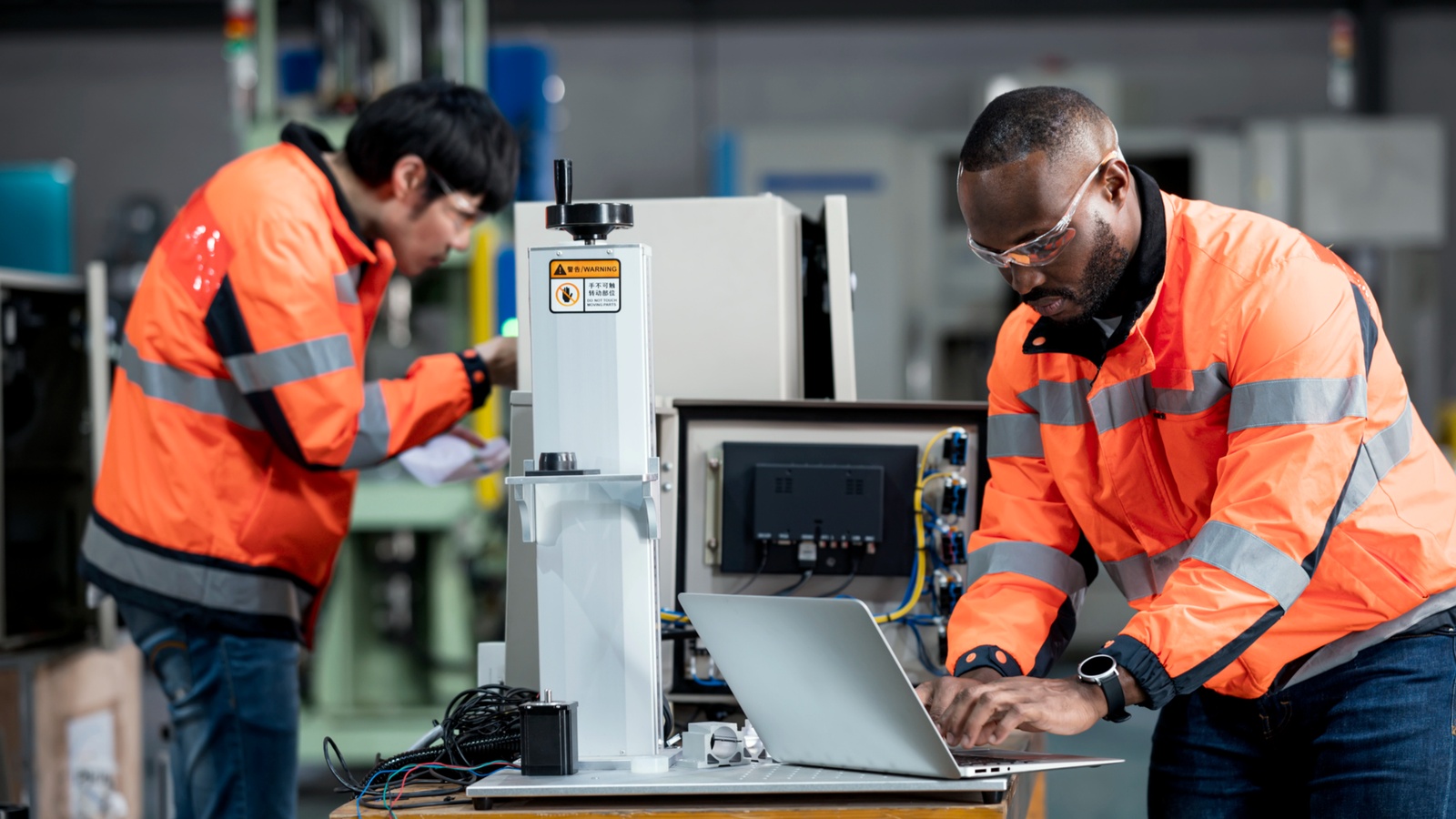
Manufacturers are pursuing sustainability like never before.
That’s according to recent polling conducted by the Manufacturing Leadership Council, the NAM’s digital transformation division. The annual Sustainability and the Circular Economy research survey seeks to determine the progress made in sustainable manufacturing.
Competitiveness: There has been a surge in the number of manufacturing executives who view sustainability as critical to the future of their businesses.
- 58% of respondents in 2022 believe sustainability is essential to future competitiveness compared to 38% in 2021.
- 68% of executives say they are implementing extensive, corporate-wide sustainability strategies. That’s up from just 39% in 2019.
What’s driving change: The motivations go beyond regulatory compliance and cost savings.
- 78% say sustainability is about better alignment with corporate values.
- 68% believe in creating a cleaner, healthier environment.
- 66% seek to improve company reputation with customers and investors.
Top corporate goals: More than half of survey respondents reported having specific sustainability goals and metrics across almost all key functions in the company.
- Goals were most apparent in manufacturing and production (79%), supply chain (69%) and product design and development (67%).
- Additional goals were cited in transportation and logistics (56%) and partner compliance (51%).
Energy efficiency is No. 1: The primary sustainability focus of manufacturers, according to survey results, is energy efficiency and reduction, combined with the transition to renewable energy sources. These efforts are linked intrinsically to meeting net-zero emissions goals.
- 45% of respondents report having announced formal net-zero goals.
- 30% aim to hit net zero by 2030.
Digital tech, employee training play a role: Also on the rise is the number of companies that recognize the importance of digital solutions in their sustainability efforts.
- These tools are being used to manage and monitor materials and energy consumption, optimize operations to improve efficiency and report sustainability progress.
- Respondents also say meeting sustainability targets must include engaging employees through education and training, as well as greening their supply chain.
The last word: An overwhelming 90% of all respondents agree that manufacturing has a special responsibility to society to become more sustainable and accelerate the transition to a future circular industrial economy.
Interested in putting some renewable energy solutions into action, including solar power, battery storage and LED lighting? Programs from utility companies and other entities enable efficiency upgrades with little or no upfront capital. Connect with NAM Energy to explore your options!
How a Manufacturer Uses R&D to Keep Old Jets Flying
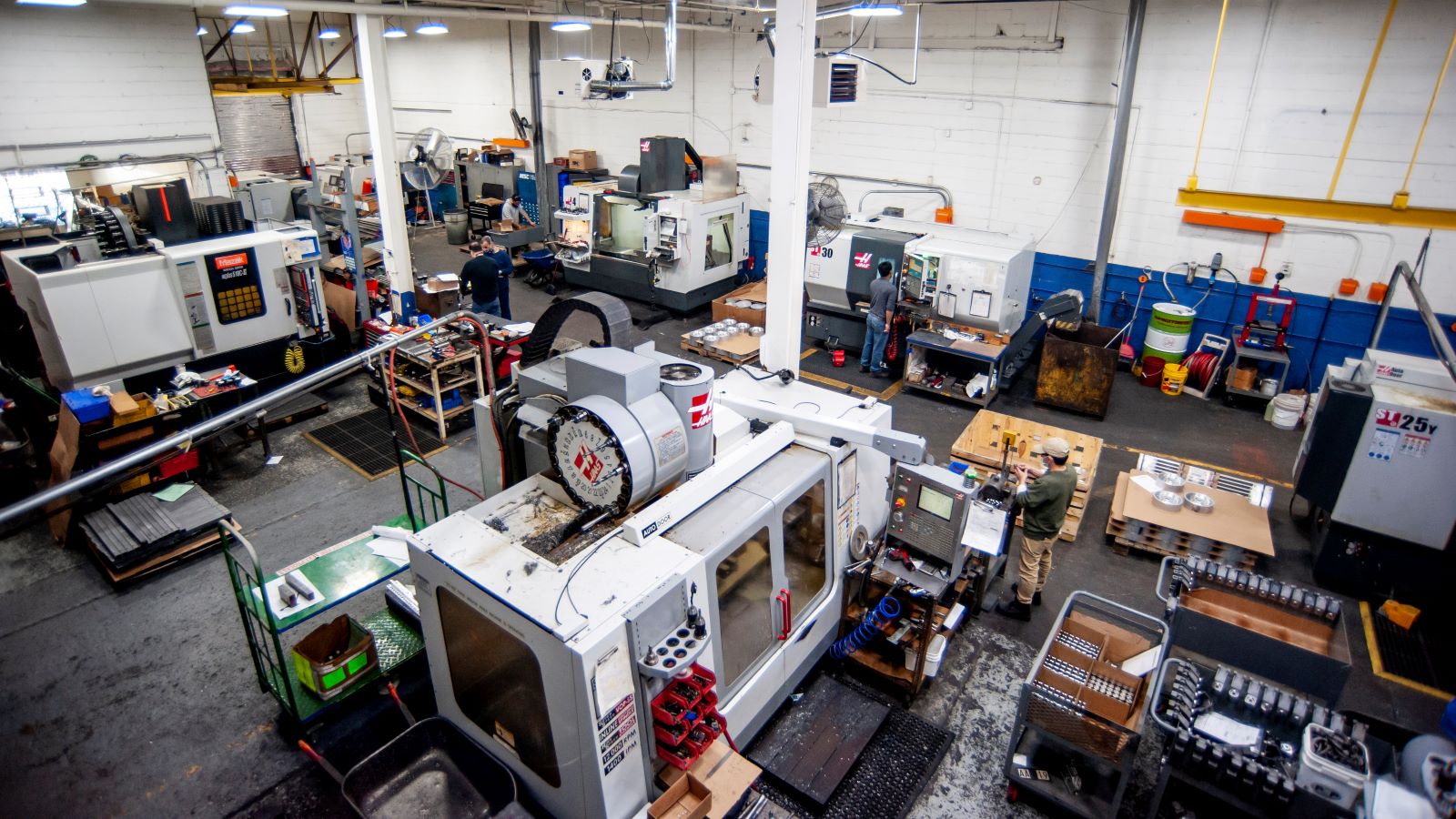
What does the U.S. military do when an expensive asset like a plane or a weapons system begins to break down?
Often, it turns to companies like Parts Life, Inc.—an innovative manufacturer that can reverse-engineer obsolete parts and help find solutions for hard-to-replicate products. But after a tax law change went into effect in 2022, the New Jersey–based manufacturer is facing increased costs for research and development, creating a barrier to the kind of innovation that is the focus of its business.
The change: Until the beginning of 2022, businesses could deduct 100% of their R&D expenses in the same year they incurred the expenses. Starting this year, however, a tax law change requires businesses to spread their deductions out over a period of five years, making it more expensive to invest in growth and innovation.
A focus on innovation: For Parts Life, coming up with new ideas is an essential, daily activity.
- “Parts Life is built around being a solutions provider,” said Parts Life President and CEO Sam Thevanayagam. “We are providing solutions for very expensive and mission-critical assets that are extremely strategic for the defense of the nation, but are also older—so their parts are not necessarily being supported.”
- “That’s where we come in to do reverse engineering. So, we’re looking at an old problem, but using innovation to solve it going forward.”
A benefit for savings: By helping the military extend the life of its assets, Parts Life also helps taxpayers.
- “We’re taking care of the warfighter and the taxpayer,” as Thevanayagam puts it.
A look ahead: As global conflicts shift, the U.S. military needs suppliers like Parts Life to help it develop solutions for future challenges, too.
- “Right now, our military is coming out of conflicts in Afghanistan and Iraq, but future conflicts may involve different terrain with different problem sets,” said Thevanayagam.
- “The work that we are doing today is helping them figure out how to approach those challenges. We’re having them tell us where they need to be, and then we’re helping them with the innovation they need to be successful.”
A tough choice: With the change in tax law, companies like Parts Life will be forced to make difficult decisions about how to spend scarcer resources, harming their ability to do critical, forward-looking work.
- “Currently, we’re leaning forward in resources and talent to lead the future,” said Thevanayagam. “If the government is going to pull the rug out from under us, we’re not going to be able to be aggressive. We’ll have to focus on maintaining our business rather than investing in new innovation.”
Our take: The NAM has pushed forcefully for the tax change to be reversed—and in October, told policymakers that the R&D amortization provision poses a “serious threat to our national security,” in part because of its impact on manufacturers like Parts Life that supply and support the U.S. military.
The bottom line: “The only way for us to continue to be relevant is to make sure that we’re investing in innovation and seeing what we can do to be a part of designing the future,” said Thevanayagam.
Visit the NAM’s R&D Action Center for critical R&D policy updates, industry stories and an opportunity to engage directly with your members of Congress.
Why Manufacturers Need R&D Tax Certainty
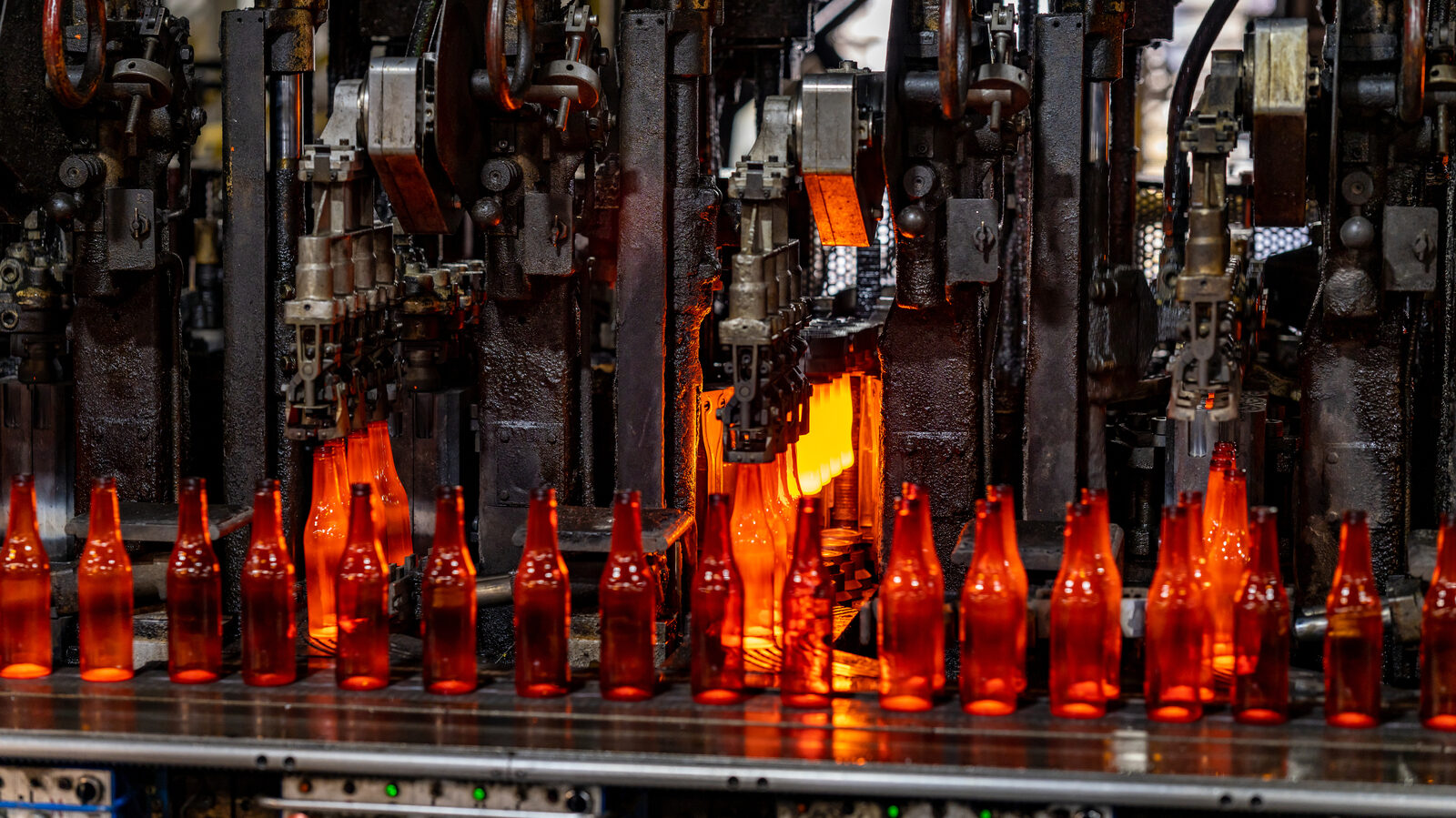
This story can also be found within the NAM’s R&D action center.
For companies like O-I Glass, Inc.—a glass manufacturing company headquartered in Perrysburg, Ohio—research and development just got a lot more expensive.
Until the beginning of 2022, businesses including manufacturers could deduct 100% of their R&D expenses in the same year they incurred the expenses—but a change in the tax law that took effect this year required businesses to spread deductions over a five-year timeframe. O-I Vice President of Global Tax and Business Services Scott Gedris explained how that impacts the company.
The scale: With 17 plants in 13 states around the country—and 70 plants in 19 countries around the world—O-I has a significant reach, serving both large multinational companies and smaller customers like microbrewers and small batch spirits manufacturers.
- The scale of the operation means that O-I invests significantly in R&D, working to develop innovative processes and specific product designs to meet individual customer needs.
- “If you look at our public financial statements, we spent $82 million in 2021 on R&D—primarily in the U.S.—and that is a significant investment for us,” said Gedris.
Case in point: In the past decade, O-I has invested heavily in developing more effective, efficient and sustainable processes. In 2011, it built a 24,000-square-foot R&D facility on its Perrysburg, Ohio, campus and has announced plans for a new glass manufacturing facility in Bowling Green, Kentucky, using technology developed at the Ohio facility.
- Because the company spends so much of its resources on R&D, a significant increase in the cost of investment would require it to make difficult decisions.
- “Anything that comes out of this in terms of tax dollars … creates a choice within our organization about where we allocate our capital,” said Gedris.
Environmental effects: At a time when O-I is making important investments in sustainability, a significant reduction in available resources could present obstacles to the company’s environmental goals.
- “When we rebuild a glass manufacturing furnace, that is a multimillion-dollar investment. The cost continues to increase with inflation and investment in modern technology that we need in order to meet our corporate sustainability goals,” said Gedris.
- “With the cost of that equipment increasing, if we’ve got $10 million less because of increased taxes, we need to evaluate whether we are going to rebuild a glass furnace in one of our 17 U.S. plants, or are we going to defer that? Alternatively, those dollars could come out of our R&D spend, which will impact what we are able to invest in future technology improvements.”
Human impact: Investments in innovation and R&D don’t just create better products and processes for consumers; they also support local economies across the country.
- “When we invest in a glass manufacturing furnace in these towns, it’s an investment in the community,” said Gedris. “We’ve got multigenerational glass manufacturers in those facilities. It’s a project that people depend on, and they have a lot of pride in the product and the processes at their facility.”
The last word: “When you’re investing in R&D, you’re investing long term—and that means you need certainty in the tax policy,” said Gedris.
Visit the NAM’s R&D Action Center for critical R&D policy updates, industry stories and an opportunity to engage directly with your members of Congress.
How Manufacturers Can Boost Their D&I Efforts

The manufacturing leaders who met in Washington, D.C., this month agreed wholeheartedly: D&I is integral to building and retaining the workforce of tomorrow.
At the third-annual Diversity+Inclusion Summit convened by the Manufacturing Institute, leaders gathered to share data, insights and lessons gleaned from their own D&I efforts. Hailing from many different industry sectors and companies of all sizes, the panelists and attendees laid out concrete actions that can transform companies’ D&I objectives.
Why it matters: With 2.1 million jobs expected to go unfilled in the industry by 2030, manufacturers need to find new populations of potential employees. Recruiting more women, racial and ethnic minorities and neurodiverse workers can expand companies’ talent pools and strengthen their workforces.
- In fact, increasing the current female workforce from 29% to 35% would fill the industry’s 746,000 open jobs all on its own, according to a recent study by the MI and Colonial Life.
- That’s why the MI is working to meet this target through its 35 x 30 Campaign—i.e., increasing the percentage of women in manufacturing to 35% by 2030.
How to do it: The summit offered important tips to help companies boost their D&I efforts, including:
- Get buy-in from company leaders: Research shows that D&I efforts lead to greater productivity, increased innovation and higher revenue—not to mention the recruitment and retention benefits. Once companies set D&I goals, leaders should incorporate D&I objectives into their annual goals to create opportunities for accountability.
- Use employee resource groups in a structured way: Companies should set up organizational structures for their ERGs that will ensure longevity and encourage fresh thinking, as well as align with companies’ overall D&I goals. These groups should have their own budgets and rotating leadership positions. When possible, the contributions of ERG leaders should be included in their incentive programs or annual goals.
- Educate your first-line supervisors about D&I: By training first-line supervisors on the latest in D&I and company-specific objectives, companies can help them both support their teams better and collect feedback to inform the overall effort.
- Offer child care and flexibility: In the post-pandemic environment, companies are still exploring what works best for them, but one thing is clear: to recruit and retain talent in a tight labor market, companies need to provide employees with options. (Check out our recent webinar on the same subject.)
Learn more: Interested in joining the conversation? Check out the MI’s D&I tools and resources, and register for upcoming events, including our upcoming Virtual Diversity+Inclusion Summit on Dec. 16, here. The virtual summit will include some recorded sessions from this event as well.
Rail Unions Move Closer to National Strike

Another large labor union has voted to reject the rail deal brokered in part by the Biden administration, moving the industry closer to a strike, according to CNBC.
Split decision: Two of the largest railroad labor unions in the United States went separate ways during their contract ratification votes, which were announced on Monday. The Sheet Metal, Air, Rail and Transportation Workers – Transportation Division voted against the proposed agreement by a slim margin, while the Brotherhood of Locomotive Engineers and Trainmen voted to ratify it.
What it means: This latest action raises the likelihood of a rail work stoppage in early December. In total, 8 of 12 unions have now ratified the tentative agreement concluded in September while the rank-and-file membership of 4 unions have rejected it.
- Should one union choose to go on strike, the broad impact would cripple the national freight rail network.
The impact: The railroad industry and major shipping groups have found that a strike would likely cost around $2 billion per day, also according to CNBC. It would affect every major rail operator.
- “The American Chemistry Council, which represents companies including 3M, Dow, Dupont, BP, Exxon Mobil and Eli Lilly, said a rail strike would impact approximately $2.8 billion in chemicals cargo a week, and lead to a GDP decline and renewed inflation.”
- “Other industries, from agriculture to retail, have warned of the economic risks of a strike.”
Next steps: Negotiations will continue through a cooling-off period that runs until early December. If a deal is not reached by 12:01 a.m. EST on Dec. 5, a strike could occur. The NAM and others have urged Congress to take action under the Railway Labor Act and pass legislation that would avert a strike if railroads and rail unions cannot reach such a deal.
What we’re saying: “Manufacturers are disheartened by today’s news on the further unraveling of rail negotiations,” said NAM President and CEO Jay Timmons. “It’s clear that Congress, both Democrats and Republicans, must be prepared to work together immediately to avert a rail strike and prevent further damage to our supply chain.”
“Cybersecurity Finds You”: An Interview with Rockwell Automation’s CISO

When asked how she got into cybersecurity, Nicole Darden Ford replies “cybersecurity kind of finds you.” The new chief information security officer at Rockwell Automation began her career in the military, where she first got into cybersecurity, then created a cybersecurity program for the U.S. Department of Agriculture before taking several leadership roles in the private sector.
Today, her advice for companies is surprisingly similar: cyberattacks will find you. As she puts it, “It’s not if, it’s when. And it’s not one time, it’s several.”
So how should manufacturers prepare for these threats? We spoke to Darden Ford recently about her recommendations, as well as Rockwell’s efforts to safeguard its own supply chain and provide services to other companies.
The current situation: “Manufacturers account for 65% of industrial ransomware last year. We’ve seen an unprecedented number of attacks, and we’ve seen attackers focus on OT,” Darden Ford says. She predicts the attacks on OT will only escalate.
- Meanwhile, many manufacturers have a clear strategy for IT, but they have not given as much thought to protecting their operational technology. Yet, as machines get more connected, their operations may become more vulnerable—especially as companies try to integrate legacy systems that weren’t “meant to be connected or patched.”
- In addition, “because we are so connected, there are third-party risks,” Darden Ford says. Small manufacturers may be more inviting targets for hackers than they realize, since their systems could provide a back door into the networks of their larger clients.
- On the plus side, manufacturers are getting smarter in building their defenses, she says. And that’s where Rockwell comes in.
Rockwell’s role: Rockwell aspires to become a “trusted advisor” to companies seeking cyber defenses, says Darden Ford. It already manufactured OT, so moving into cybersecurity for such equipment was a natural next step.
- Its partnerships with other firms, including Dragos, CrowdStrike, Cisco and others, allows
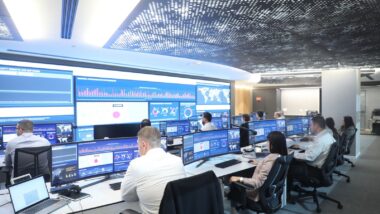 Rockwell to offer bespoke cyber monitoring and other services to its clients.
Rockwell to offer bespoke cyber monitoring and other services to its clients. - These services include penetration testing, threat detection and response and an OT “SOC”—i.e., a security operations center, which monitors threats to clients’ operations remotely.
How it works: “We have an OT cybersecurity roadmap—it starts with an assessment in your specific OT space, then walks through potential risks,” Darden Ford says. (See the end of this article for her detailed description of this roadmap.)
- The process includes building an “asset inventory, as you can’t protect what you don’t know.”
- “Then we talk about ways you can reduce your attack surface,” Darden Ford continues. “This is about segmentation. We help organizations divide their network into different domains. If you have ransomware or malware that propagates very quickly, then you have the opportunity to quarantine it.”
- In addition, the roadmap helps companies decide which tools and resources to use. For OT, you need to use very passive systems that don’t interfere with “getting the product out the door,” Darden Ford says.
After this process is complete, Rockwell’s SOC helps clients stay safe and hone their responses to real attacks.
- The SOC keeps eyes on a company’s operations remotely, notifies it of breaches within the plant network and helps it decide which threats to tackle. As Darden Ford says, the SOC stands in for the teams that companies would otherwise have to hire themselves.
On-site resources: Manufacturers can tap their existing staff to work on cyber defenses, including with offsite monitors. Darden Ford recommends drafting “the plant engineering team, along with the IT team,” who would have the knowledge and resources required.
A community effort: Large manufacturers should help educate small manufacturers on cyber issues, says Darden Ford.
- “We have a lot of suppliers, so to mitigate third-party risk, we provide more awareness about OT and advice about upping their cyber hygiene. We work closely with suppliers and do a lot of knowledge sharing,” she says.
Collaboration at the top: In addition, it’s also beneficial for CISOs and manufacturing leaders to consult their peers in what Darden Ford calls “mastermind sessions.”
- These conversations have provided her with “a lot of insights and data,” she says. She gets indispensable input on “strategies, frameworks, journeys and roadmaps,” as companies try to find their way through this cyber landscape together.
The bottom line: When asked what she says to companies that doubt the need for cyber protections, Darden Ford has a simple answer: “You wouldn’t drive your car without insurance—that’s what this is.”
- “What used to be optional is becoming mandatory,” she adds. “For small or midsize companies, you are still going to have to report” back to your large customers, many of whom require stringent protections of their suppliers. Those requirements will only get “more and more rigorous over time,” she warns.
- In other words, however you choose to do it, “you need a plan.”
The Roadmap
Darden Ford supplied us with her account of Rockwell’s cyber roadmap for its own suppliers, below. “The playbook aligns with the NIST framework, showing you step-by-step how to audit your current security state, identify gaps and take a proactive approach to mitigate risk,” she says. Here is her account of the key steps.
Step #1: Discover
- Know where you stand. Conduct a security and risk assessment—log all issues and review progress against findings.
- You can’t protect what you can’t see. You must gain a full understanding of what network assets you have on your plant floor and their current state. Start by conducting extensive network discovery and asset inventory.
Step #2: Remediate
- Work with stakeholders to prioritize assets and organizational risk levels. Take the necessary steps to eliminate, upgrade or replace unneeded, unused or unsupported OT applications and infrastructure. This will look different for every organization based on what you discover in Step #1.
Step #3: Isolate
- Establish a perimeter by physically and logically segmenting your networks. Put up a firewall and establish internal and external cybersecurity policies to protect your OT assets. Set up an on-premises industrial data center to encapsulate critical applications inside the protected OT network.
- Secure endpoints with security software on plant floor assets.
- Enable third-party remote access. Third parties need access, but you must control the access and maintain visibility into what they’re doing in your network by enabling OT access controls.
Step #4: Monitor and Respond
- Now that you have a solid foundation in place, the next step is to implement OT network monitoring to provide real-time OT cybersecurity, including malicious event/asset risk alerting, network diagnostics, AI learning and KPI dashboarding. The data only works for you if you are continuously viewing and reacting to it.
- Establish an OT SOC for 24/7 real-time alert monitoring, acknowledgement and triage. Cyberattacks aren’t limited to 9–5.
- Create an integrated IT/OT cyber event response team. Define event response and isolation protocols. IT/OT must have equal involvement and buy-in for these protocols to be successful. Execute tabletop exercises to simulate attacks and outcomes.
How Managers Can Produce Top-Notch R&D
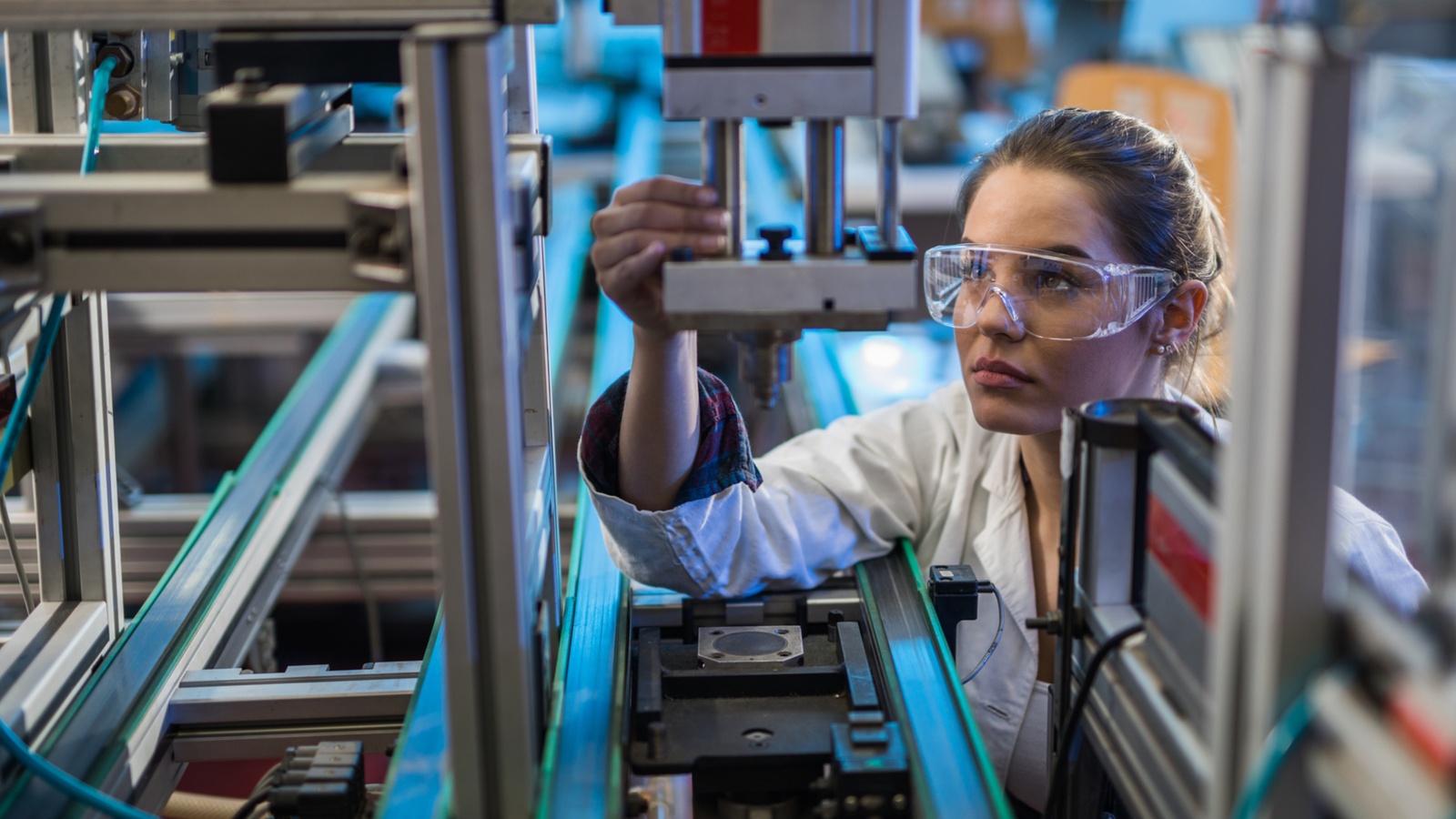
As innovation in manufacturing continues at breakneck speed, research and development is more important than ever—but it requires outstanding managers to make it all happen.
So how do these managers get the education and insights they need? The Innovation Research Interchange, a network of cross-industry innovators that the NAM combined with earlier this year, has an answer: an executive management course called Shaping Innovation Leaders.
The gist: Co-hosted by the Kellogg School of Management at Northwestern University, the course provides a forum for strategic thinking, education and networking for technology leaders from around the world.
- In 2023, it will take place on May 13–19 on the Northwestern campus in Evanston, Illinois.
The details: The goal of this seven-day program is to develop midlevel managers into leaders for their companies, by covering topics including:
- Evaluating financial results;
- Segmentation, targeting and positioning;
- Growing and defending your brand;
- Legal and strategic investments;
- Building a better network; and
- Negotiating skills and strategic alliances;
Who’s involved: To get a sense of this event’s caliber, look no further than the attendees from the 2022 course.
- They hailed from a wide range of companies, including manufacturers such as Mars, Procter & Gamble, John Deere, Hershey, NatureWorks, Air Liquide, Kimberly-Clark Corporation, Sherwin-Williams and many, many more.
The reviews are in: Participants in the 2022 course were enthusiastic about what they learned and experienced.
- “[I’m] really super impressed with the program, soup to nuts,” said John Deere Manager for Global Strategic Communications & Culture Jacqueline Kiple. “One of my favorite aspects of the program was really getting a chance to think about our business a little bit differently … to take a step back and think about the higher-level impacts that affect decision-making in our respective organizations.”
- “What I really enjoyed about this course was first and foremost the esteemed professors. … [The course] gives you a really big view of all the information you need to really understand business and understand the decisions that are getting made,” said Sherwin-Williams Associate R&D Director Tony Rook. “It gives you that top-level view of how you add value to [your] organization.”
Get involved: Registration is now open for the 2023 course. You can find additional information and register here.
